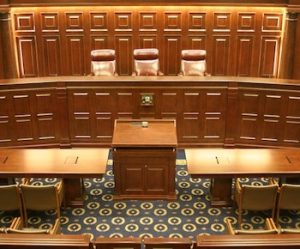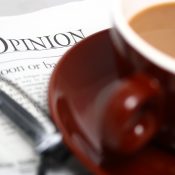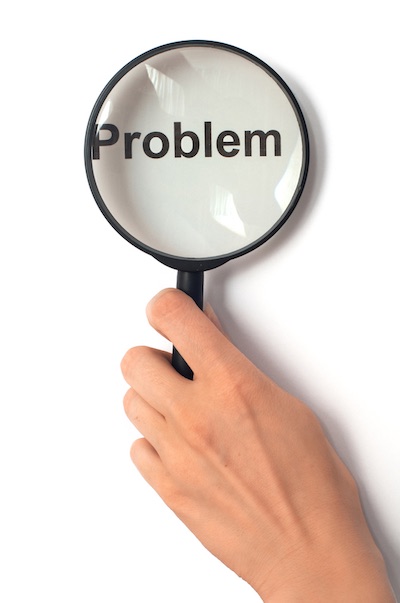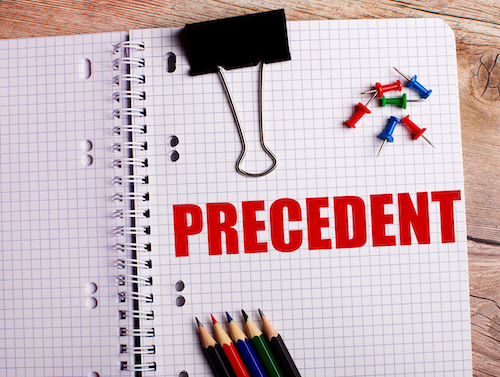 Aqua Prods. v. Matal, (Fed. Cir. Oct. 4, 2017) (Before Prost, C.J., Newman, Lourie, Dyk, Moore, O’Malley, Reyna, Wallach, Taranto, Chen and Hughes, J.) (Opinion filed by O’Malley, J., Newman, Lourie, Moore, and Wallach, J. join and Dyk, Reyna, J. concur in result) (Opinion filed by Moore, J., Newman and O’Malley join) (Opinion filed by Reyna, J., Dyk join and Prost, C.J., Taranto, Chen, and Hughes, J. join in part) (Opinion filed by Taranto, J., Prost, C.J., and Chen and Hughes, J. join dissenting from the judgment, Dyk and Reyna, J. join in part in other respects) (Opinion dissenting from the judgment, Hughes, J., Chen, J. joins)
Aqua Prods. v. Matal, (Fed. Cir. Oct. 4, 2017) (Before Prost, C.J., Newman, Lourie, Dyk, Moore, O’Malley, Reyna, Wallach, Taranto, Chen and Hughes, J.) (Opinion filed by O’Malley, J., Newman, Lourie, Moore, and Wallach, J. join and Dyk, Reyna, J. concur in result) (Opinion filed by Moore, J., Newman and O’Malley join) (Opinion filed by Reyna, J., Dyk join and Prost, C.J., Taranto, Chen, and Hughes, J. join in part) (Opinion filed by Taranto, J., Prost, C.J., and Chen and Hughes, J. join dissenting from the judgment, Dyk and Reyna, J. join in part in other respects) (Opinion dissenting from the judgment, Hughes, J., Chen, J. joins)
This case concerned the Aqua Products ‘183 patent for a jet-propelled swimming pool cleaner. While Aqua and Matal litigated in district court, Zodiak Pool Systems petitioned the Board for inter partes review on selected claims of the patent. The Board denied Aqua’s motion to amend the claims, because Aqua failed to prove that its proposed claims were patentable over the prior art. The Board placed the burden of proof for patentability of the amended claims on patent owner Aqua, and declined to consider the entire record in making its patentability assessment.
After a panel of the Federal Circuit affirmed the Board’s decision, Aqua requested an en banc rehearing. The USPTO Director Joseph Matal joined the appeal on behalf of the USPTO. At issue was whether the Board could place the burden of proof for patentability of amended claims on the patent owner in an IPR, and the Board’s underlying interpretation of the relevant statutes, specifically § 316(d) governing claim amendments and 35 U.S.C. § 316(e) allocating the burden of proof in an IPR.
The Federal Circuit, in a split en banc opinion, vacated the Board’s decision denying Aqua’s Motion to Amend and remanded for a final decision on patentability of the proposed claims.
The Federal Circuit further mandated that the Board require petitioners to establish the unpatentability of both challenged and substitute claims in all pending and future IPRs.
Judge O’Malley authored the five-judge plurality opinion; seven of the eleven judges concurred in the result. Ten of the eleven judges reviewed the PTO’s interpretation of the statutes and accompanying regulations under Chevron. See Chevron, U.S.A., Inc. v. Nat. Res. Def. Council, Inc., 467 U.S. 837, 842 (1984). Chevron evaluates: 1) whether Congress addressed the precise issue; and, if silent or ambiguous with the respect to the specific issue, and 2) whether the agency’s answer is based on a permissible construction of the statute.
The plurality opinion considered the text, purpose, legislative history, and statutory context of both 35 U.S.C. § 316(e) and § 316(d), and concluded that Congress explicitly placed the burden of proving unpatentability on the petitioner for all claims in an IPR, whether original or amended. The judges first considered the text and purpose of § 316(d), which allows a patent holder to amend a patent during IPR proceedings at least once as a matter of right without enlarging the scope of the patent or introducing new matter. According to the plurality, this section governs the entry of amended claims into an IPR without imposing any evidentiary burdens. Once the substitute claims are entered in an IPR, § 316(e) places the burden of proof regarding unpatentability onto the petitioner.
Furthermore, § 316(e) unambiguously placed the burden of proving unpatentability of all claims in an IPR – whether original or amended – on the petitioner. Congress chose not to distinguish the types of claims and instead used the broad language of a “proposition of unpatentability.” The use of “unpatentability” rather than “invalidity” is key, as unpatentability may refer to pending or issued claims while “invalidity” applies to issued claims only. Section 316(e) was the only place where Congress spoke on the issue of burdens within § 316. Claim amendments do not create “new” claims. Amendments are prohibited from adding new claim scope or new subject matter and serve as a tool to narrow claims, in order to ensure patentability. Allowing narrowing amendments during an IPR helps strengthen and clarify patents. This supports the overall goal of the AIA statutory scheme.
Six of the eleven judges participating in the en banc hearing believed the relevant statutes were ambiguous due to Congressional silence regarding amended claims in § 316(e). The Court therefore proceeded to Chevron step two. The Court considered whether the statutory ambiguity was attributable to Congress’s lack of clarity about the intended result, or was an actual intent to allow the agency to resolve the question.
According to the five-judge plurality, Congress did not mean to allow the agency to resolve this question. Neither C.F.R. §42.20 nor §42.121, promulgated under the authority of § 316(a)(9), addressed the burden of proof regarding unpatentability, once an amended claim entered into the IPR. Further, nothing in their text or commentary supported that they interpreted the scope of 316(e) or the evidentiary burden regarding patentability. The regulations instead governed only the preconditions for entry of the amended claims. The PTO thus did not adopt a rule or regulation governing the evidentiary burdens regarding patentability of proposed amended claims. As a result, the plurality interpreted the governing statue de novo, and concluded that the most reasonable reading placed the burden of proof on the petitioner. Furthermore, the Board must base its patentability determinations of amended claims on the entirety of the record before it rather than solely on the face of the motion to amend.
Judge Moore’s Concurrence
Judge Moore, joined by Judges Newman and O’Malley, concluded that 35 U.S.C. 316(e) unambiguously placed the burden of proving unpatentability of an amended claim on the petitioner and that Chevron’s deference was unwarranted. Judge Moore nonetheless analyzed the PTO regulations under Chevron’s second prong. He considered whether the agency rule created to fill the apparent ambiguity was based on a permissible construction of the relevant statute, in this case 35 U.S.C. § 316(a)(9), which expressly stated that any Congressional gaps must be made “by regulations.”
Judge Moore concluded that the Board’s decision, which placed the burden of proving unpatentability of an amended claim on the movant, was not a permissible rule, because it failed to meet the “by regulation” requirement. Instead of a notice and comment rulemaking procedure, required for regulations, a majority of the Board voted in favor of the rule and the PTO Director marked it as precedential. Despite the Director’s argument that previous formal agency adjudications received Chevron deference, the statute’s “by regulations” requirement proved determinative for Judge Moore.
Judge Reyna’s Concurrence
Unlike the plurality and dissenting opinions, Judge Reyna did not utilize the Chevron two-step analysis. He found that the Patent Office had yet to fully consider the statutory interpretation of the evidentiary burdens for IPRs, namely with respect to § 316(e). Further, Judge Reyna addressed the burden of proof in relation to its two components: the burden of production and the burden of persuasion. If a party has the burden of production, it is responsible for providing sufficient evidence in support of the facts at issue. In contrast, if a party has the burden of persuasion, it is responsible for persuading the decider of the case, be it jury or judge, that the facts at issue are true.
Since § 316(e) was ambiguous, Judge Reyna disregarded the Chevron test and evaluated the PTO’s actions under the default rules of evidence. He then found that § 316(d) and 37 C.F.R. § 42.121, which replace the default rules, denote that the patent owner does not bear the burden of persuasion for the patentability of its amended claims.
However, the burden of production was a notable point of contention between the judges. Part III of Judge Reyna’s opinion noted that the majority did not call into question § 316(d) or 37 C.F.R. § 42.22, “which…allocate a burden of production to the patent owner.” This part of the opinion was joined by Chief Judge Prost, as well as Judges Taranto, Chen, Dyk, and Hughes, which meant it was the only part of the opinion joined by a majority of judges. Judge Reyna therefore claimed that his Part III “set[] forth the judgment of this court on what the Board may or may not do with respect to the burden of production on remand in this case.”
However, Judge O’Malley took issue with this assertion. She called into question the validity of Part III as a judgment and classified it as “dictum,” reiterating that the only judgment entered was for vacatur. In addition, Judge O’Malley wrote that Part III, “create[d] a hole in the very judgment” Judges Reyna and Dyk concurred in. Therefore, there is some uncertainty about who has burden of production for amended claims in IPR proceedings; patent owners might still be responsible for producing evidence relating to the patentability of amended claims depending on future interpretations.
Judge Taranto’s Dissent
In his dissent, Judge Taranto found that 37 C.F.R. § 42.20(c) assigned the burden of persuasion to patent owners, and that this regulation should be given Chevron deference as it was adopted through notice and comment rulemaking and made within the Director’s congressional grant of authority to promulgate regulations. Judge Taranto would have affirmed.
Judge Hughes, concurring in part and dissenting from the judgment of vacatur
Judge Hughes, joined by Judge Chen, concurred with Judge Taranto’s opinion that the statutory language of 35 U.S.C. § 316(e) was ambiguous because it did not dictate who bears the burden of proof on motions to amend claims under 35 U.S.C. § 316(d). Judge Hughes further concluded that C.F.R. § 42.20 was permissible under Chevron’s second prong because it was promulgated in accordance with the procedures described in § 553 of the APA, including notice and an opportunity for public comment. Further, the PTO specifically considered motions to amend claims when it allocated the burden of proof for motions on the movant.
In deciding whether to remand the case back to the PTO, Judge Hughes relied on Auer v. Robbins, 519 U.S. 452, 461 (1997), which makes an agency’s interpretation of its own regulation “controlling unless plainly erroneous or inconsistent with the regulation.” Judge Hughes concluded that Auer was applicable here because the PTO, through numerous decisions since 2002, clearly and consistently stated that the burden of proof imposed by § 42.20 applied to motions to amend claims. Finally, Judge Hughes disagreed with the notion that Congress’s use of “regulation” in a statute foreclosed statutory and regulatory interpretation except through notice and comment rulemaking.
With respect to the burden of proof, the burden of persuasion for patentability of amended claims in an IPR proceeding is placed on the petitioner, not the patent owner. However, considering Judge Reyna’s concurrence, patent owners might still have the burden of production; depending on future cases.
[Troutman-Ad]
[Troutman-About]

![[IPWatchdog Logo]](https://ipwatchdog.com/wp-content/themes/IPWatchdog%20-%202023/assets/images/temp/logo-small@2x.png)


![[Advertisement]](https://ipwatchdog.com/wp-content/uploads/2024/05/LexisNexis-May-16-2024-sidebar-700x500-1.jpg)
![[Advertisement]](https://ipwatchdog.com/wp-content/uploads/2024/04/Patent-Litigation-Masters-2024-sidebar-last-chance-700x500-1.jpg)
![[Advertisement]](https://ipwatchdog.com/wp-content/uploads/2024/05/Patent-Portfolio-Management-2024-sidebar-super-early-bird-with-button-700x500-1.jpg)
![[Advertisement]](https://ipwatchdog.com/wp-content/uploads/2024/05/Artificial-Intelligence-2024-Getting-AI-Patents-Allowed-sidebar-700x500-1.jpeg)

![[Advertisement]](https://ipwatchdog.com/wp-content/uploads/2021/12/WEBINAR-336-x-280-px.png)
![[Advertisement]](https://ipwatchdog.com/wp-content/uploads/2021/12/2021-Patent-Practice-on-Demand-recorded-Feb-2021-336-x-280.jpg)
![[Advertisement]](https://ipwatchdog.com/wp-content/uploads/2021/12/Ad-4-The-Invent-Patent-System™.png)







Join the Discussion
No comments yet.